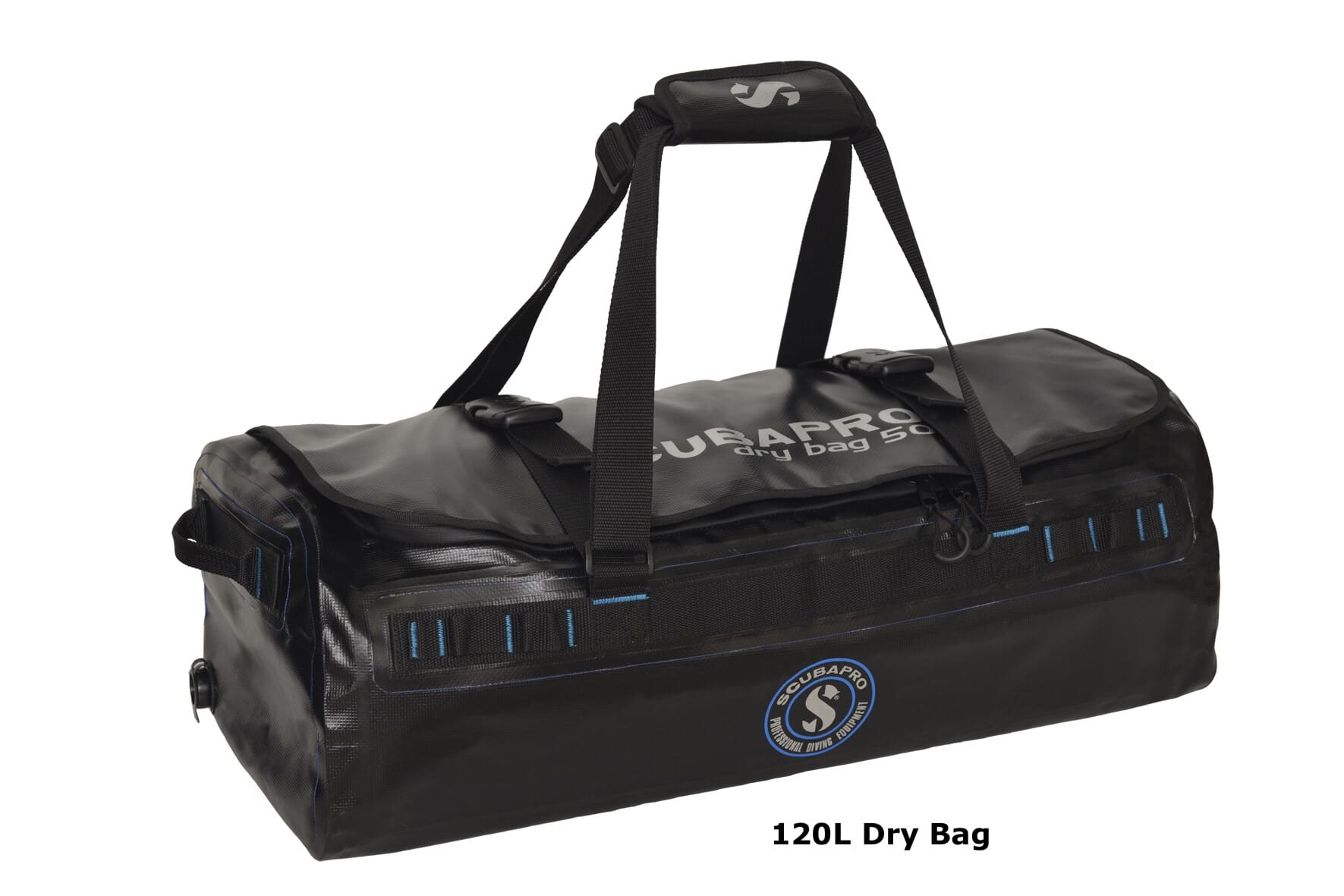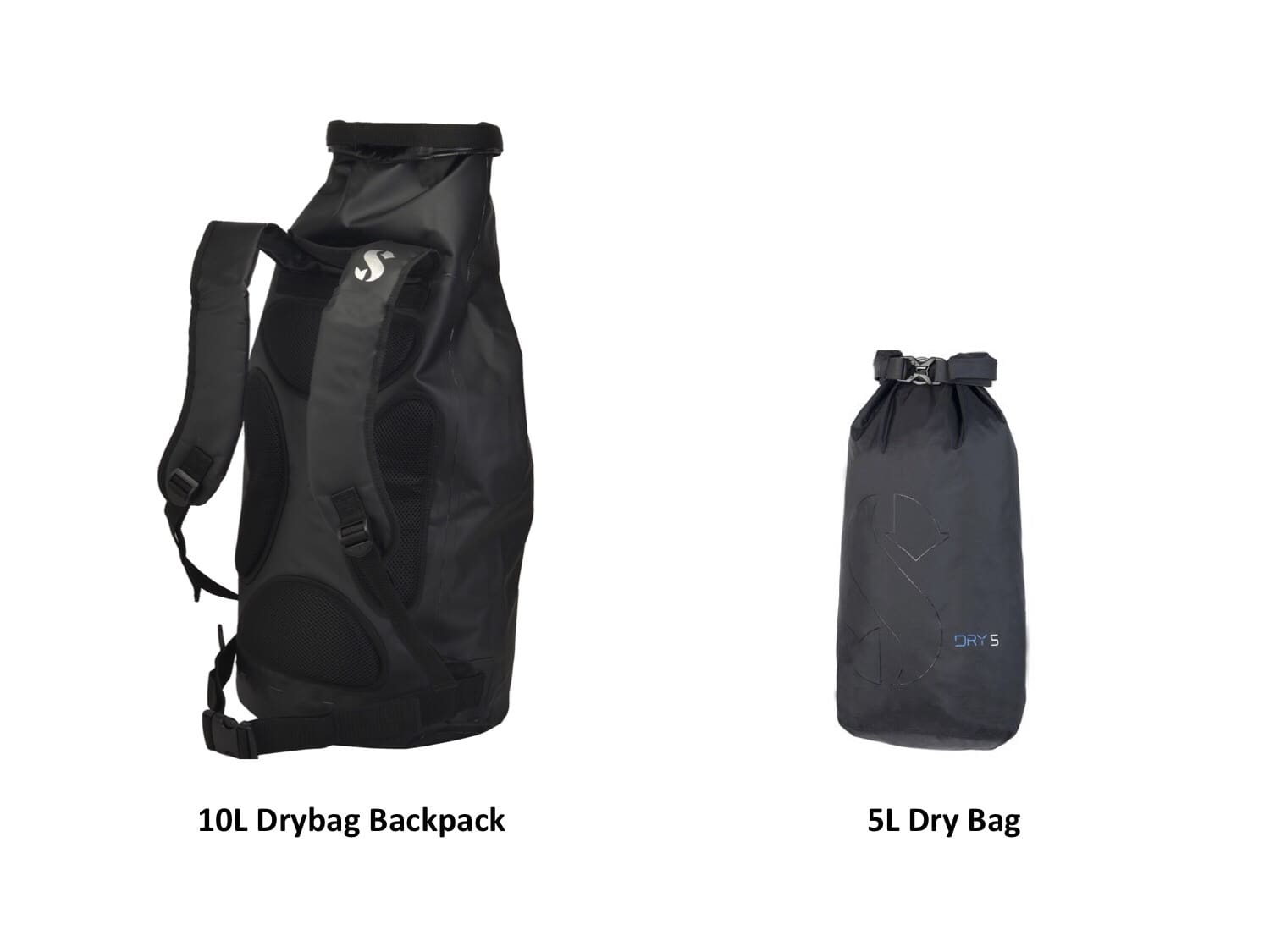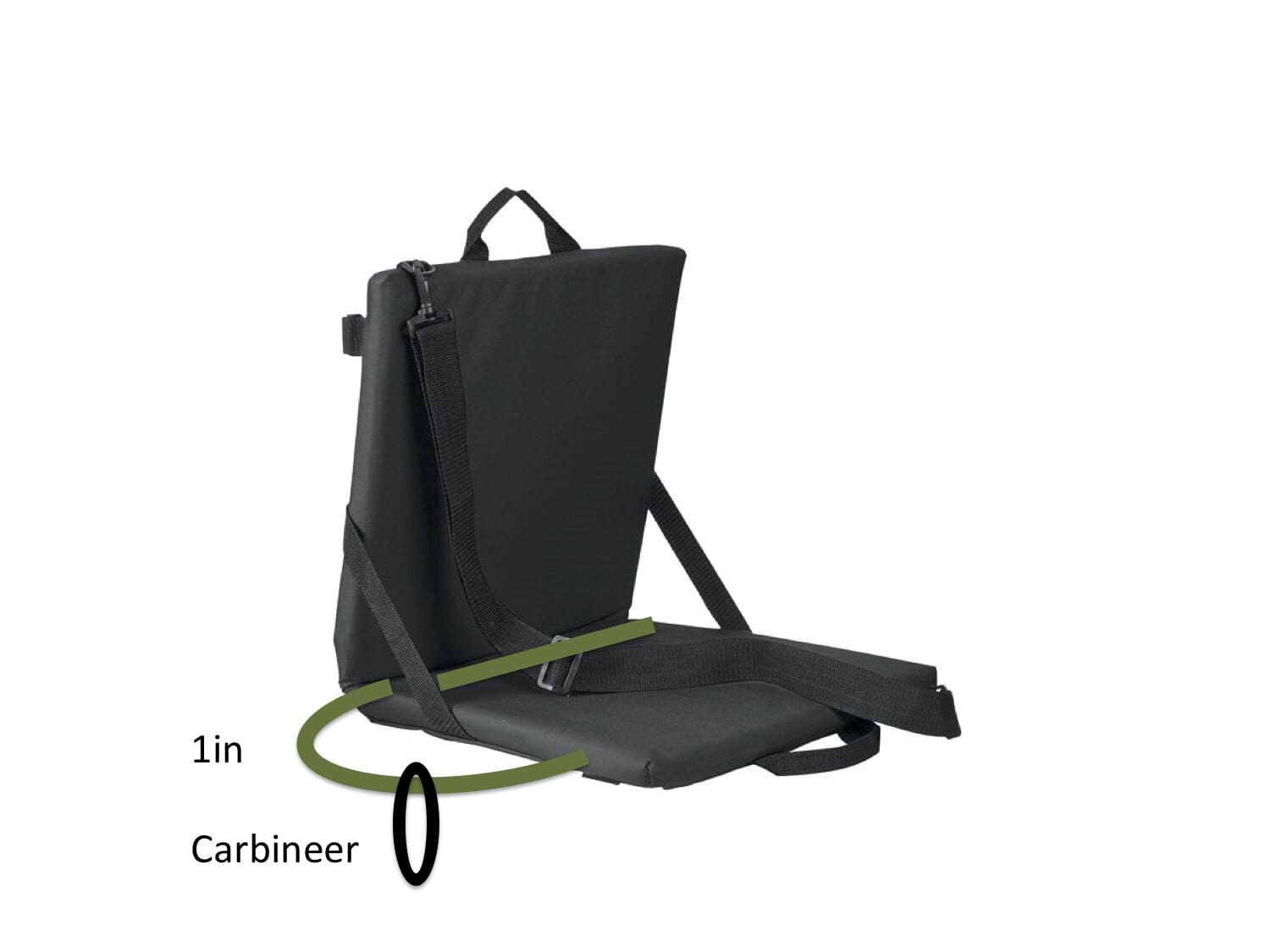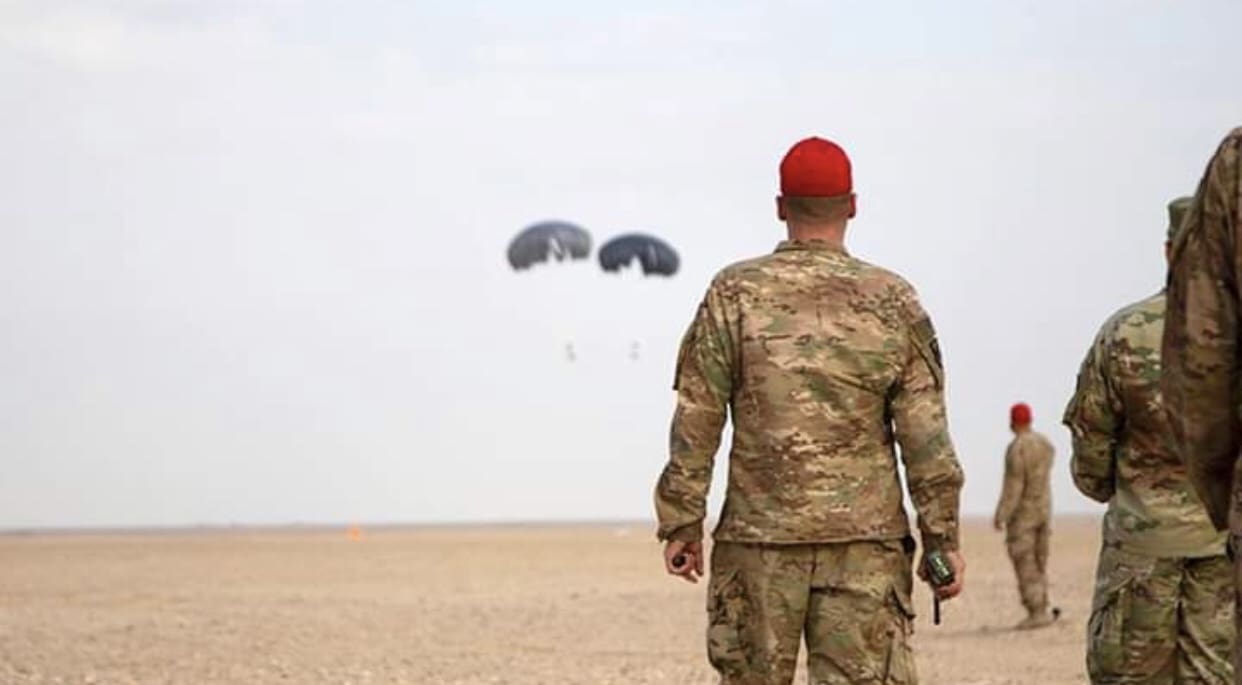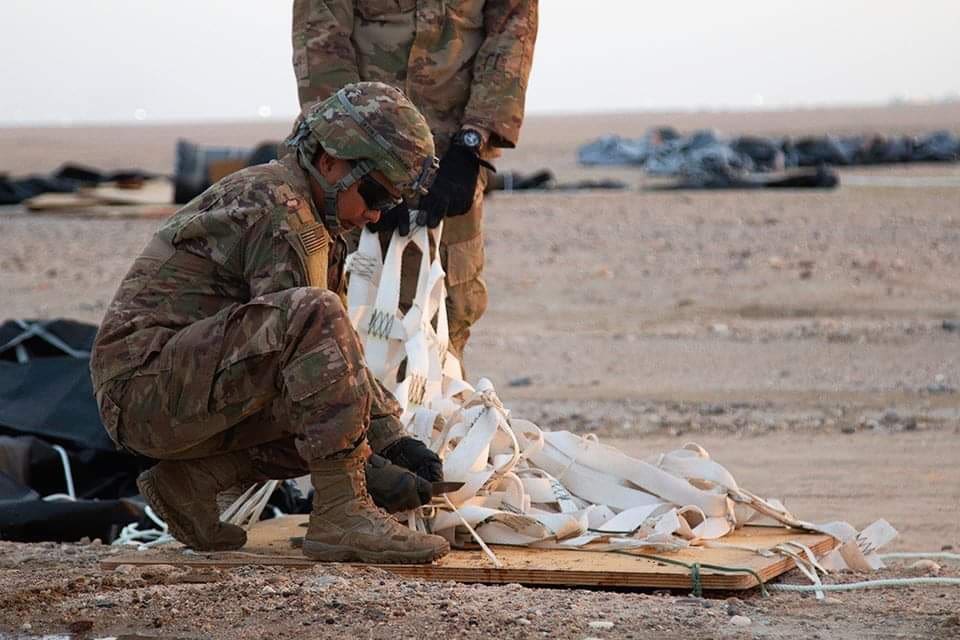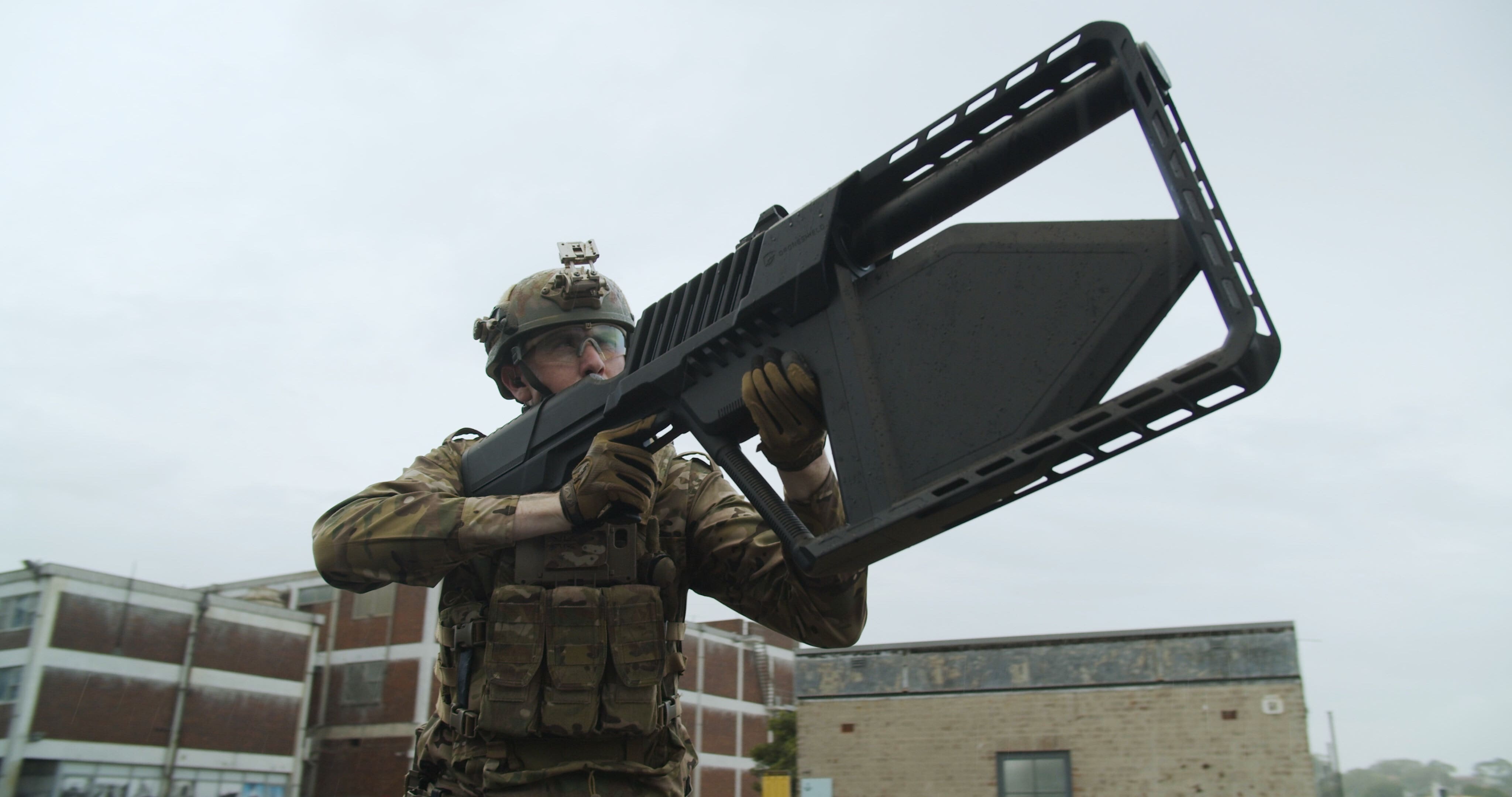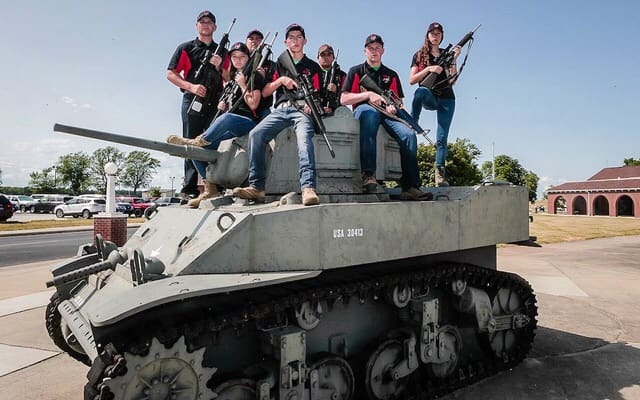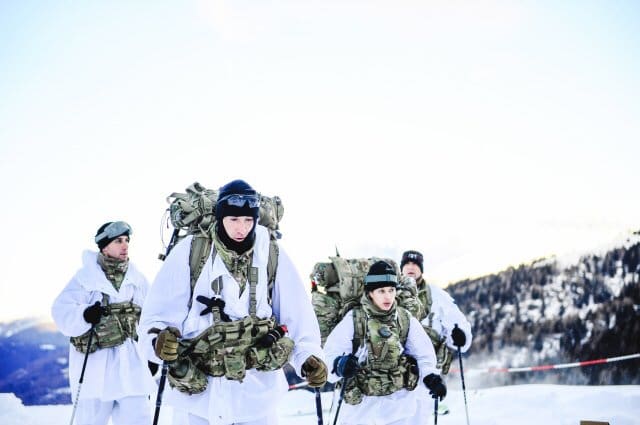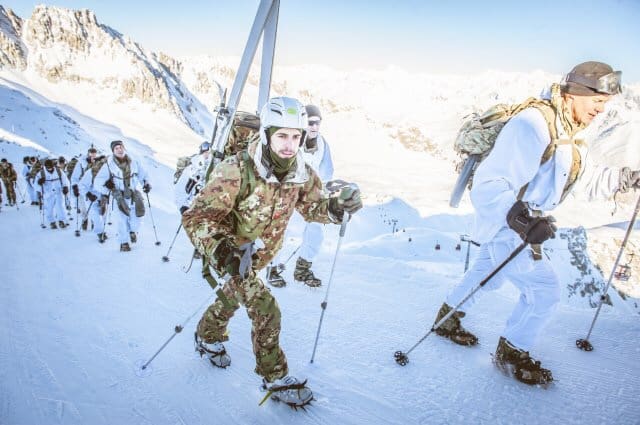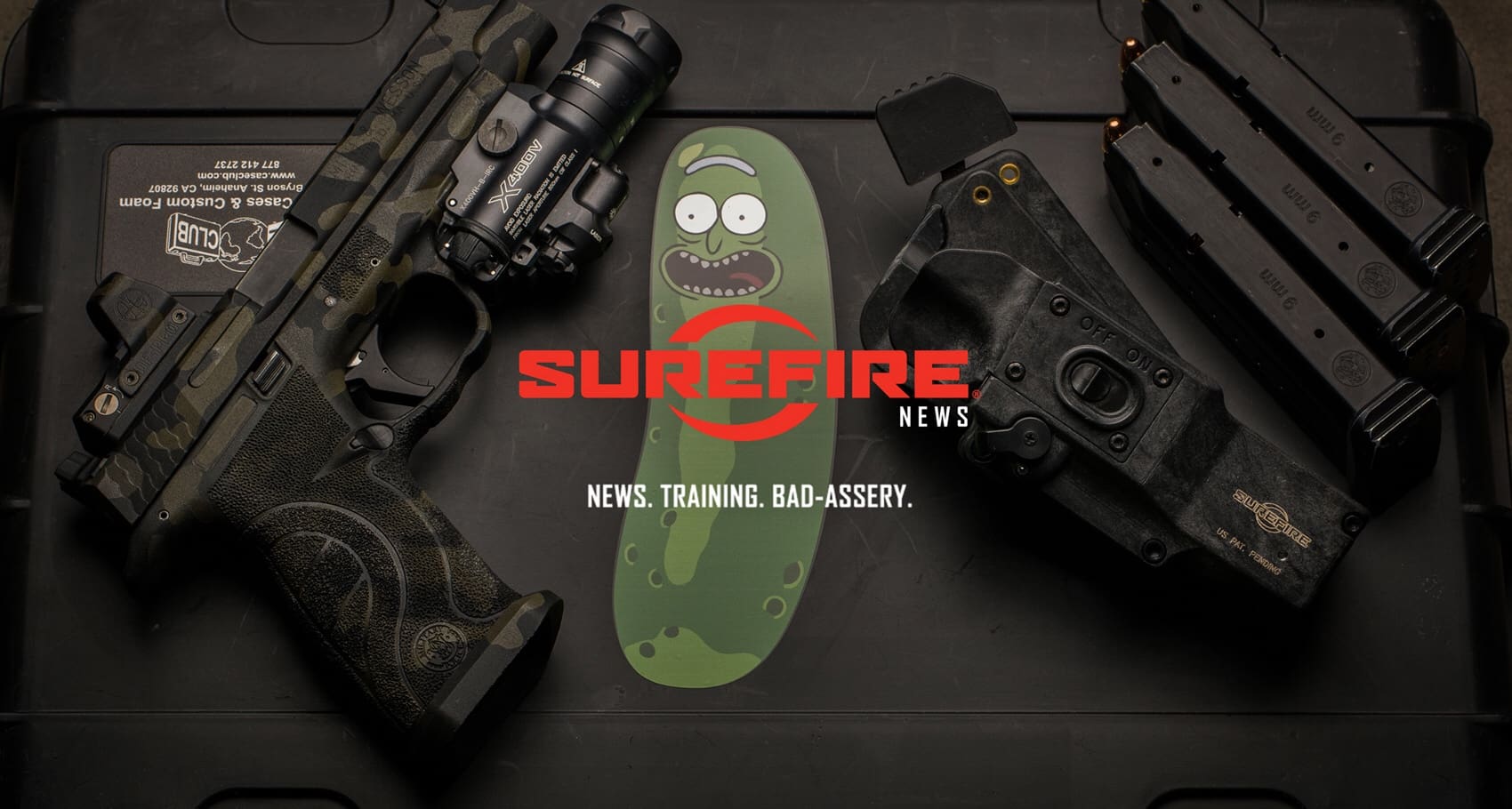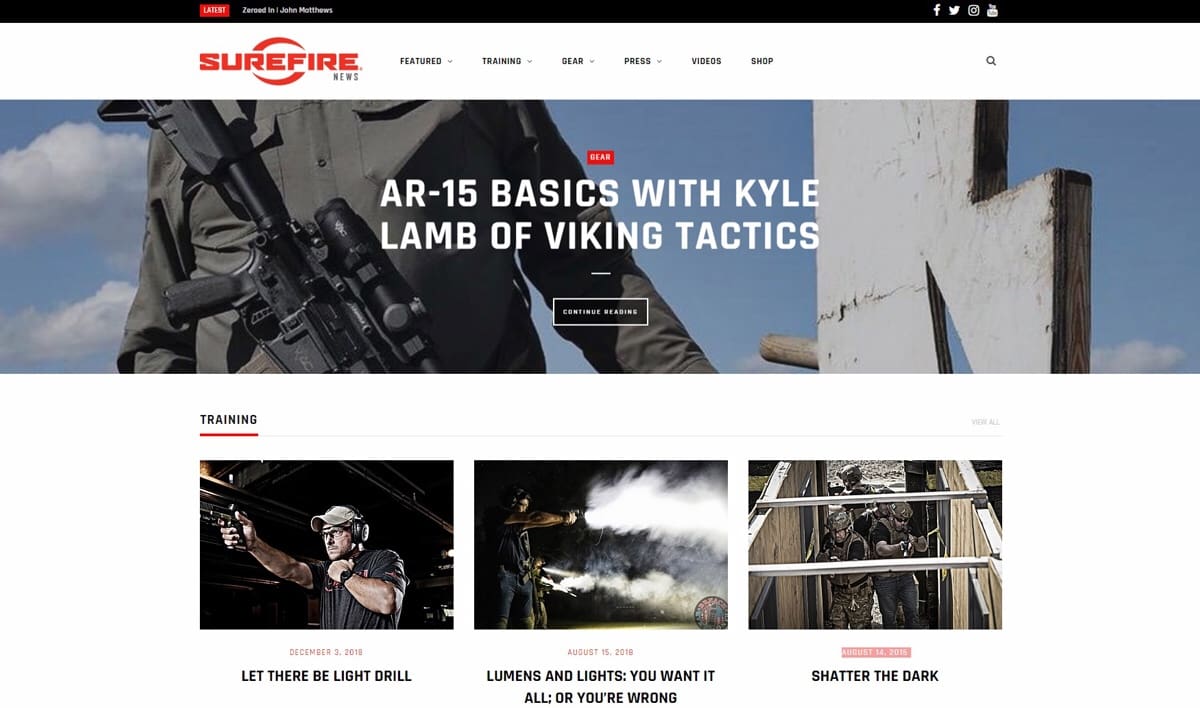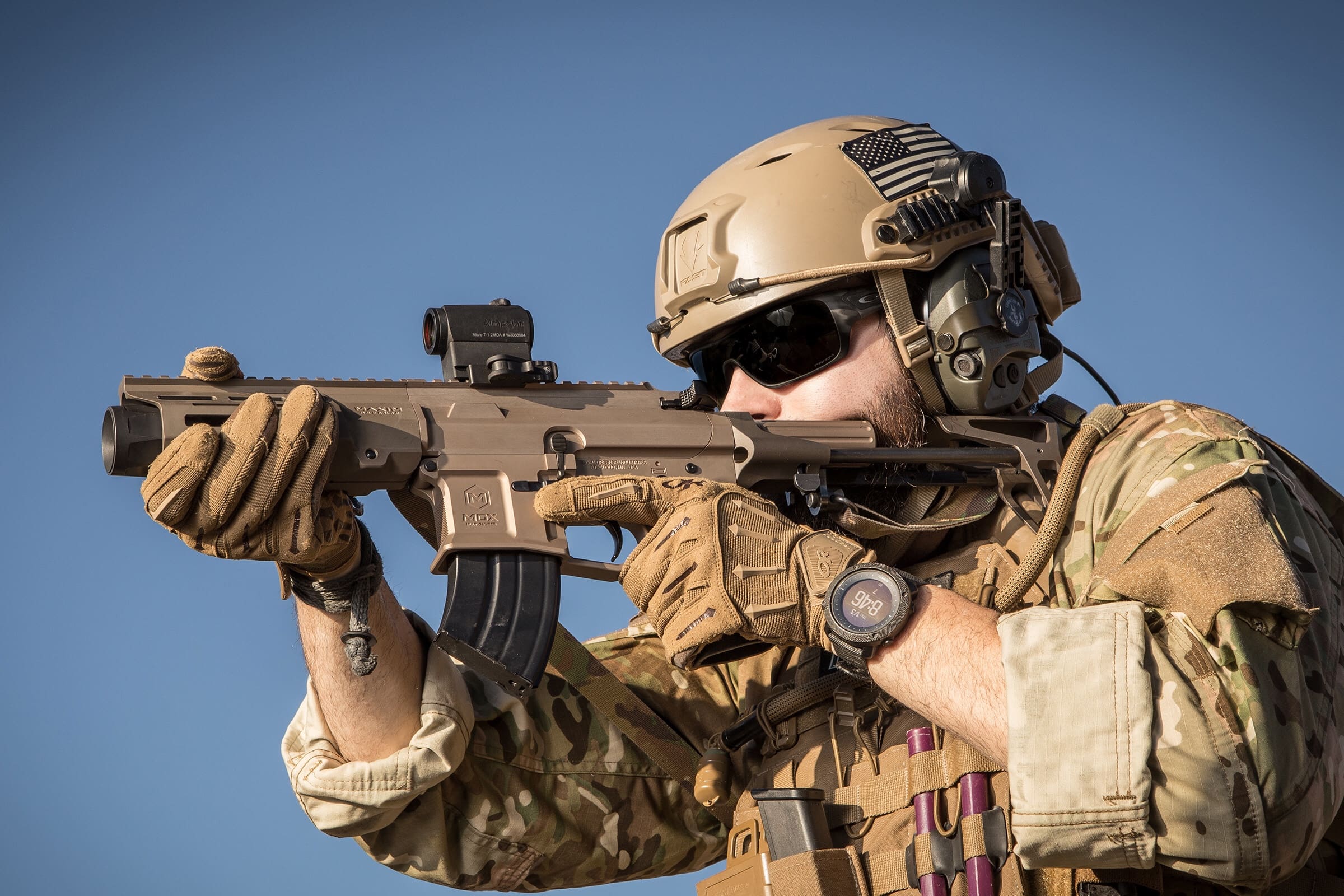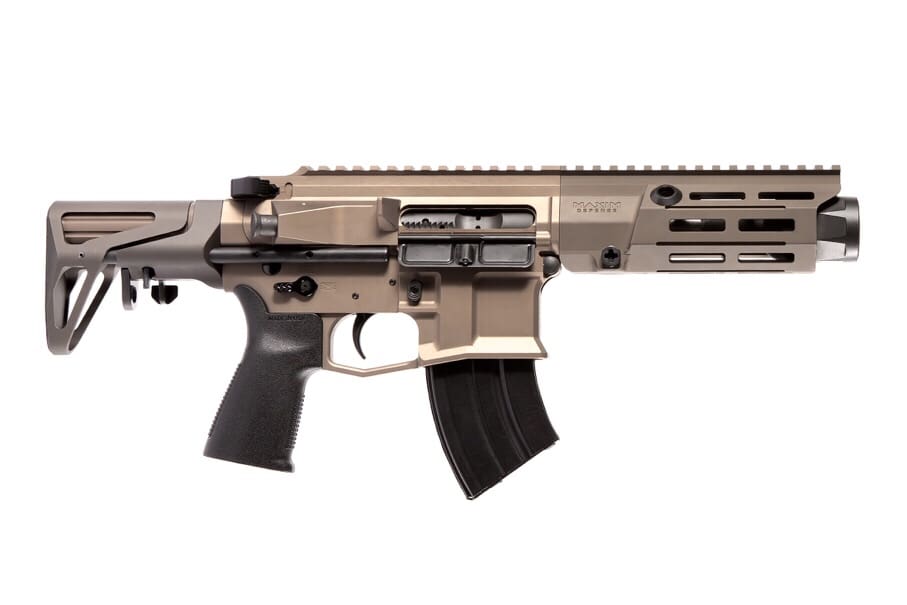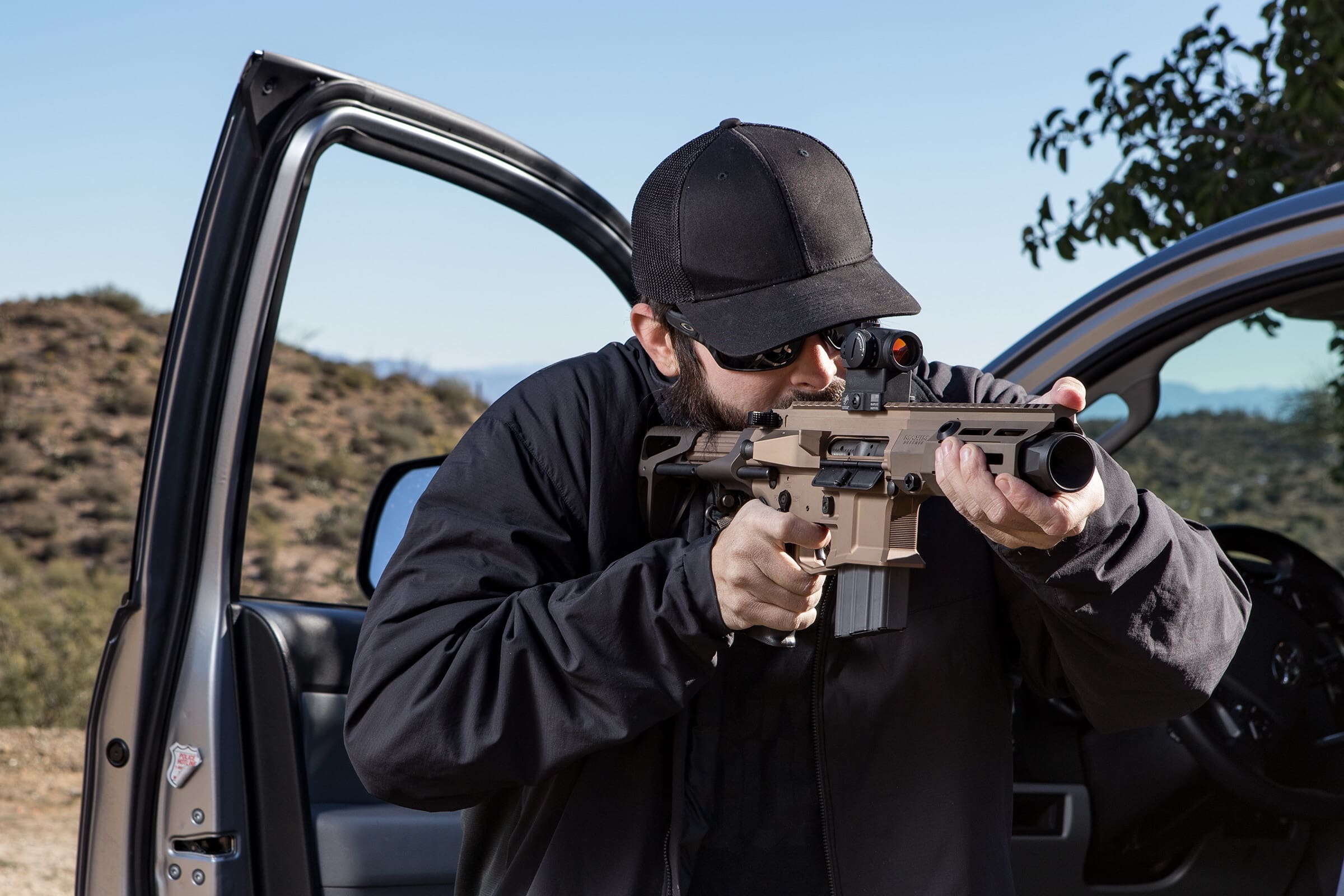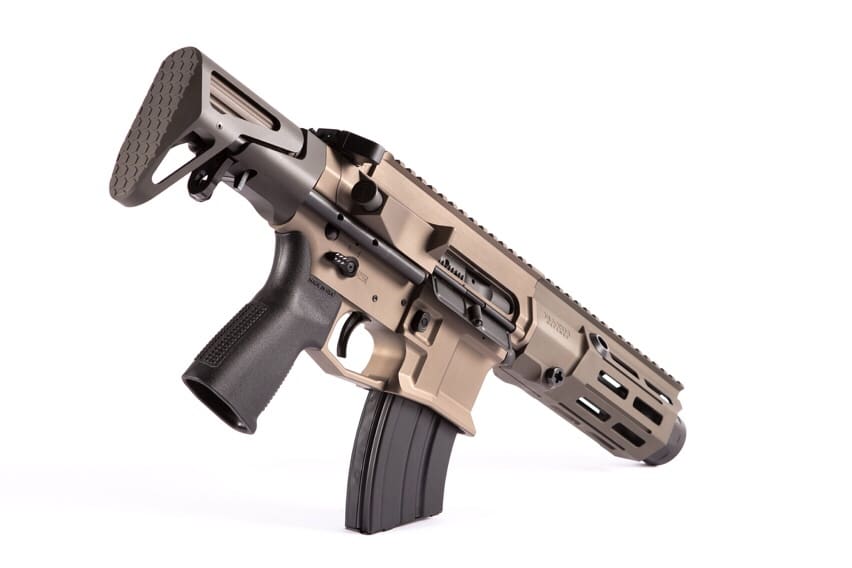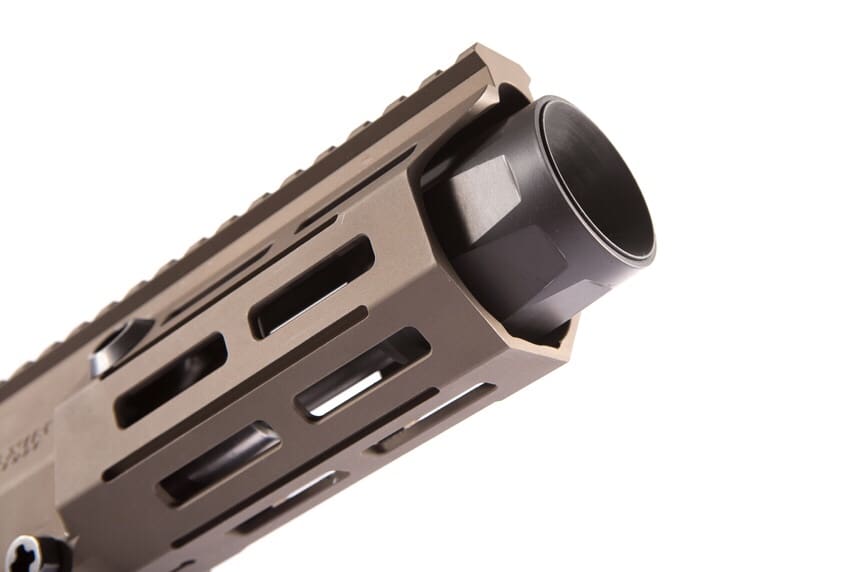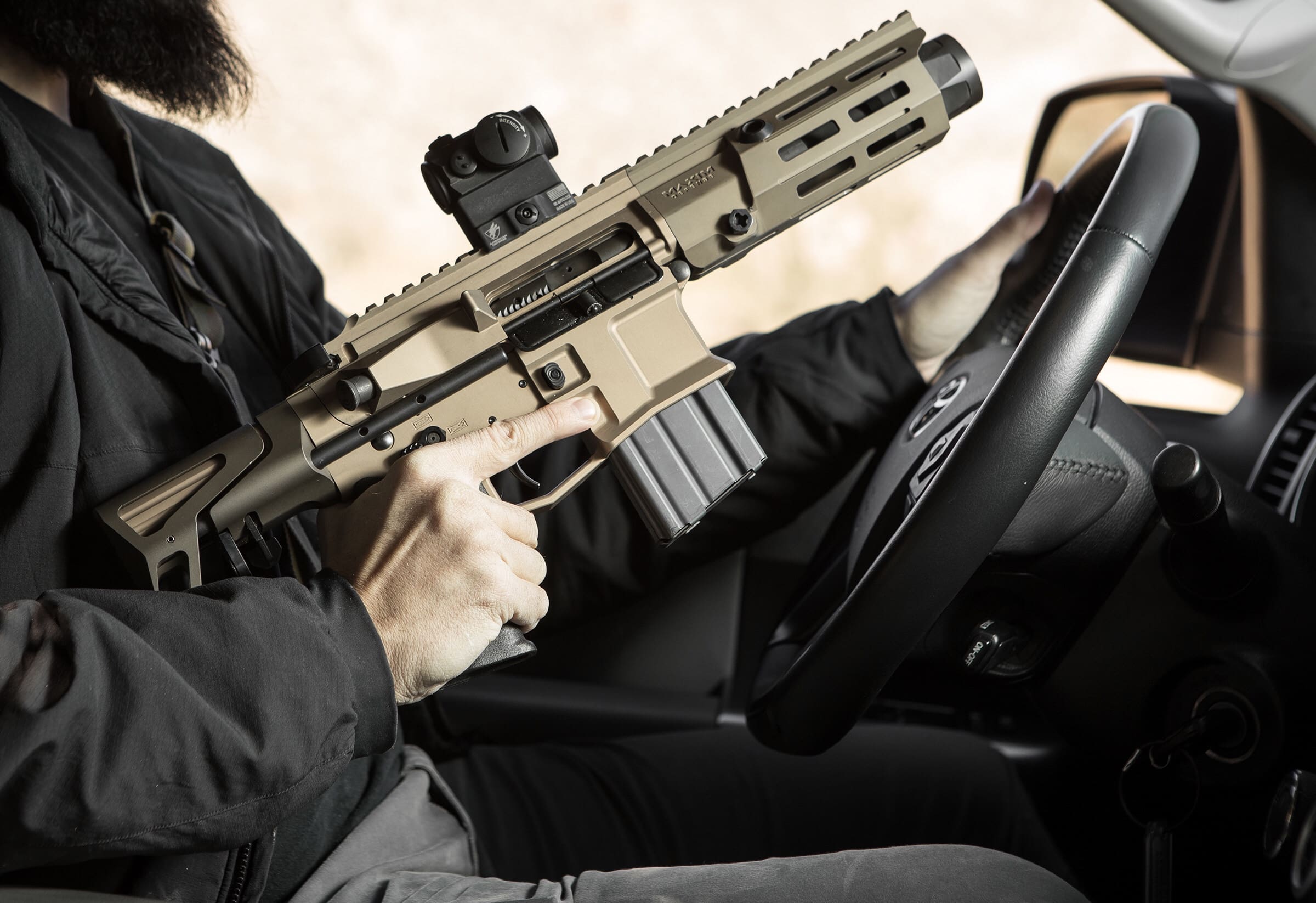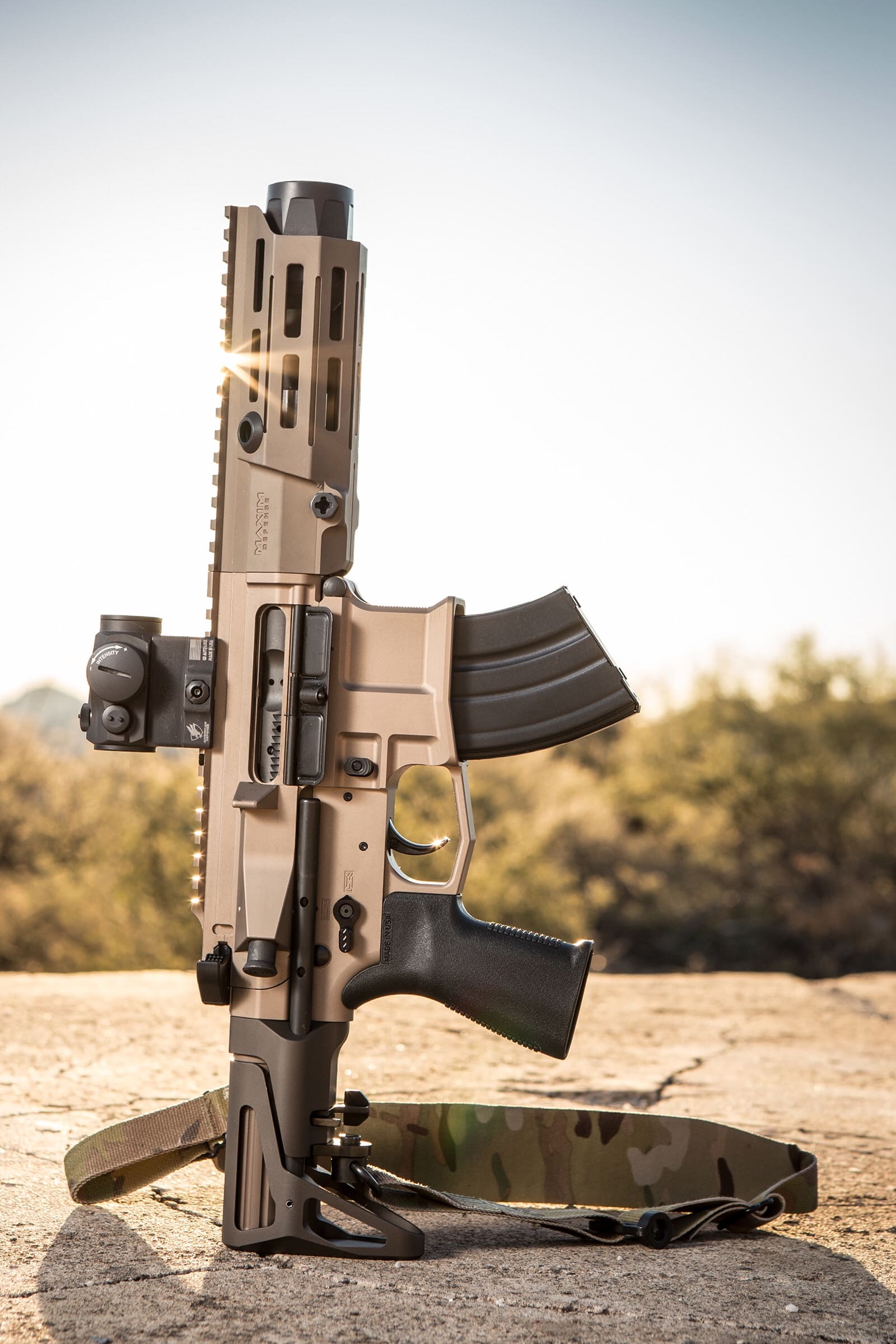In the mid-1980s, there was a great deal of re-emphasis on dismounted load planning and load discipline in the U.S. Army. Much of this effort fell under the rubric of the “Light Division” concept. It was a worthy endeavor to lighten a soldier’s load and improve tactical dismounted mobility; but ultimately the resulting initiatives had little enduring impact. Since then we have incrementally added a great deal to a soldier’s burden – essentially without removing a single ounce of legacy weight. Tactically useful items like body armor, individual radios and night vision devices have become standard issue for almost everyone in our combat formations. GPSs have supplanted analog maps and compasses. Likewise, all individual and crew served weapons now have some form of day and night optical systems; and, of course, all the new electronic tools need batteries. Lots and lots of batteries.
The net result is a considerable increase rather than any aspirational reduction of a soldier’s mission load in combat. On the plus side, all of this high-speed “light weight gear” gives the American military tactical and operational capabilities that are the envy of the world. Nevertheless, it was indeed fortuitous that operations in Afghanistan and Iraq quickly became almost exclusively vehicle-centric. Dismounted operations of any duration away from immediate vehicle support became a rare exception. In that sense, the increased soldier load was at least partially masked by the fact that vehicles have been readily available to carry the extra weight in theater. As a result, small unit leaders became pretty good at putting together sound vehicle load plans but did not have to spend much time addressing rucksack load planning. Not surprisingly, the art of dismounted load management atrophied rapidly after the first year or so of GWOT.
There is no leadership alchemy that can make 100 pounds of gear weigh any less than 100 pounds. Ultimately, the unit mission load weighs what it weighs. Leaders have to deal with that reality; it is an enduring problem that cannot be wished away or avoided. However, here are some bullet points that can help organize leaders’ thoughts and efforts to successfully manage soldiers’ individual combat loads.
Dismounted Load Management Principles
- Pre-mission planning should determine what a unit MUST carry to accomplish the assigned tactical task.
- Load discipline requires individual soldiers and leaders to work collectively to ensure the unit effectively carries what is required – no more and no less.
- The eternal conundrum: A leader must accept risk to keep individual loads as light as possible. Conversely, a leader cannot gamble with the mission – or with lives – just to lighten the load. Remember the Gilligan’s Island Rule; it is never safe to assume that any mission will only be a “Three Hour Tour.”
- Sound load planning and enforcement must always be based on mission dictates, NOT on achieving equal burden sharing or relative individual comfort.
- In other words, ensuring maximum probability of mission success and his soldiers’ survival must be a leader’s overarching priority; military necessity – not “fairness” – must be the focus.
- Nothing a soldier carries into combat belongs to him. In terms of load carriage, he is a self-actualized mobility platform transporting resources vital to completing his team’s mission.
- Every piece of equipment is expendable – if necessary – to accomplish the mission. I say again, ALL equipment is expendable!
- While lighter equipment alternatives are generally more desirable, a unit may often need to carry whatever item is most effective to support the mission – regardless of weight penalty.
- Likewise, if a piece of equipment or ordinance – no matter how heavy or bulky – is deemed mission essential the question is not IF it will be carried but rather HOW it will be carried.
- A good load plan is comprehensive, utilitarian, and flexible; it must also anticipate and designate deliberate load transition points to support the upcoming mission.
- Use pre-mission inspections and rehearsals to confirm if the load plan is correct, complete, and works as intended. Make adjustments as necessary.
Another factor that negatively influences the training of leaders in effective load management practices has been that the official terminology tends to be imprecise and even misleading. When ALICE was fielded in the mid-70s, the Army referred to only two load configurations: Fighting Load and Existence Load. The fighting load consisted of two full ammo pouches on the harness, first aid pouch, one canteen, the bayonet, and the etool. Nothing else. In temperate or hot climates, the ALICE medium rucksack – without frame – was supposed to be more than adequate to carry all of the other items needed to “exist in the field.” Which is a bizarre and inexplicable conclusion given how habitually overloaded solders had been in Vietnam. The fielding of MOLLE introduced three load configurations: The Light Fighting Load (FLC Vest only), The Assault Pack Load, and The Full Pack Load. Beyond identifying the standard load carriage items issued to soldiers, neither framework provides a very informative or useful construct for mission load planning.
I re-read parts of the 1990, FM 21-18, Foot Marches, for this article and I recommend it (or whatever newer version may be out there) as a good resource. Chapter 5, in particular, goes into a good deal of detail on soldier load planning considerations. It also explains additional concepts like “Approach March Load,” “Sustainment Load,” and “Contingency Load.” Unfortunately, the manual continues to perpetuate the notion that there is a distinct line between vest or harness only “fighting loads” and everything else. I vehemently disagree. Therefore, in the attached picture, I am outlining a more simplified, precise and functional way to think about planning, arranging, and distributing a soldier’s and a unit’s combat load. I call it “The Fighting Load Continuum.” The concept is simple. If moving on foot into combat then anything the unit deems essential enough to carry on soldiers’ backs is – by definition – a component of the individuals’ “fighting load.” Whether we are comfortable with that fact or not. Note: Items displayed in the picture are pieces of gear I had on hand and are presented only as visual aids to illustrate the concept.
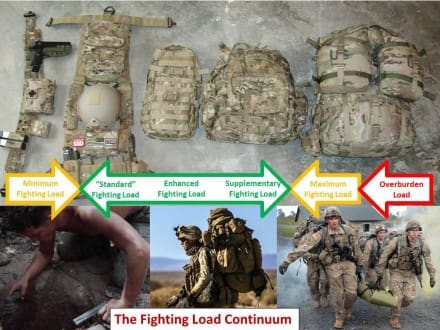
Starting from the left is the Minimum Fighting Load. In World War II, frogmen went into harm’s way with little more than a pair of UDT shorts and a Kabar knife. Tunnel Rats in Vietnam faced danger with only a 45 and a flashlight. It is also true that even today a good number of people on the battlefield have a sidearm as their only issued weapon. Obviously, that gives soldiers so marginally equipped a defensive capability but not an offensive capability. That is why the Minimum Fighting Load is highlighted in cautionary amber as clearly sub-optimum. Soldiers who have the primary mission of “closing with and destroying the enemy by fire and maneuver” need considerably more than the minimum. Starting with the “Standard” Fighting Load displayed second from the left. I have put “standard” in quotations because what constitutes a standard fighting load has changed countless times over the years for the American Military – not to mention other Armies. Generally, the baseline “fighting load” has been built around the “basic load” of ammunition for a rifleman in a given timeframe. Therefore, since the current standard is 210 rounds, we will start there – with the caveat that mission specific load planning may raise or lower that number considerably.
Of course, a solder going into battle likely needs a few more tools in addition to his rifle and ammunition. Today, a couple of fragmentation grenades, a first aid kit, helmet, body armor, and water are usually considered part of a standard fighting load. Leaders, grenadiers, automatic riflemen, and those manning crew served weapons will have duty position specific items as well. A radio for a leader for example. Still, the “standard” fighting load is almost never sufficient without at least some augmentation. Enter the “Enhanced Fighting Load” that adds a small backpack to the Standard Fighting Load configuration. This pack may be a Modular Assault Pack (MAP) as shown or something slightly larger. MAPs have been issued in SOF units for at least the last 12 years or so. A MAP is not common issue with MOLLE or FILBE; however, since units often buy “off the shelf” some non-SOF units probably issue these as well.
The earliest MAPs I encountered were smaller than the sample I have on display. They had no shoulder straps and were designed to be mounted directly onto body armor via PALs. Other than the “modularity” of the design, they were not much different from the small hydration packs Camelbak produced as far back as the 80s. The newer, larger versions still have the PALs direct mounting option. However, it is more common to see them used as “day packs” or “go bags” with the detachable shoulder straps attached. That arrangement works better riding or getting into and out of vehicles and makes the pack’s contents more quickly accessible. This MAP is ~1200 cubic inches. By comparison, the Army issue Assault Pack is ~2000 cubic inches and the Marine Assault Pack is slightly larger at ~2300 cubic inches (neither shown). Those packs are not designed to be directly attached to individual armor, but rather can be buckled onto the top of the full sized rucksacks.
Next over would be the Supplementary Fighting Load. That means a larger pack to carry more stuff. These packs represent an intermediate load-carriage solution. They are often called “3 Day Packs” and also date back to commercial versions popular with soldiers in the 80s. These packs tend to range in size from ~2000 cubic inches to ~3500 cubic inches. Indeed, the issue Army and Marine Assault Packs actually straddle the low end of this category of medium rucksacks. Likewise, there are numerous mission specific versions of packs in this size range currently being issued to medics, JTACs, EOD, as well as machinegun, mortar, and Anti-Tank crews. The aforementioned smaller assault packs are simple not of adequate size to carry the volume and weight that these specialists habitually need for their tactical mission. The example shown is the Army’s Medium Rucksack that has ~3000 cubic inches of space. I have a couple of extra pouches mounted as well as a beavertail so this one is probably in the ~3500 cubic inch range.
Anything bigger than that falls into the Full Sized Rucksack class, a.k.a. the Maximum Fighting Load in the Fighting Load Continuum. For reference, the large ALICE is approximately ~3800 cubic inches. Both the MOLLE and the FILBE rucksacks are ~4000 alone and up too ~5000 cubic inches with only a pair of Sustainment Pouches added. In terms of volume, both of those two standard rucksacks, with sustainment pouches and issue assault packs attached are ~7000 cubic inches or more. In other words, almost equivalent to two Large ALICE packs. That explains why carrying a Maximum Fighting Load automatically moves a soldier’s burden from the lower-risk green range into the tactically riskier cautionary amber zone. To be clear, soldiers have to be able to fight with the full rucksack on their backs. It is not always tactically sound to drop rucks when the shooting starts. For example, when the situation is untenable and the unit has to break contact under pressure.
Then there is the perpetual issue of the Overburden Load. Soldier overloading actually extends beyond the Fighting Load Continuum but remains inexorably linked and must always be considered in realistic load planning. The Overburden Load can be just about anything deemed mission essential but excessive to the Maximum Fighting Load. Red indicates that it represents undesirable high-risk but is nevertheless often unavoidable. As I mentioned in a previous article on Packboards, for extended operations in particular it may be expedient to deliberately put as much on the backs of some soldiers as they can carry. However, doing that makes those soldiers combat ineffective until they can dump that excessive load. Other, less burdened, troops will have to provide security for them because they – sometimes quite literally – have their hands full. Intentional overloading is actually quite common in one specific situation. That is when evacuating the wounded. As a rule, soldiers carrying a casualty are effectively out of the fight until they can at least drop off their injured teammate in some relatively safer location.
In the end, leaders have to face the fact that for the majority of dismounted combat operations – even relatively short ones – it is all but impossible to avoid at least some overloading entirely. However, as indicated by the color-coded arrows, the goal of effective load management should be to keep as many of a unit’s soldiers as possible in the more combat effective green range – for as much of the time as possible – rather than the cautionary amber or high-risk red zones.
To be continued in Part II.
LTC Terry Baldwin, US Army (Ret) served on active duty from 1975-2011 in various Infantry and Special Forces assignments. SSD is blessed to have him as both reader and contributor.
